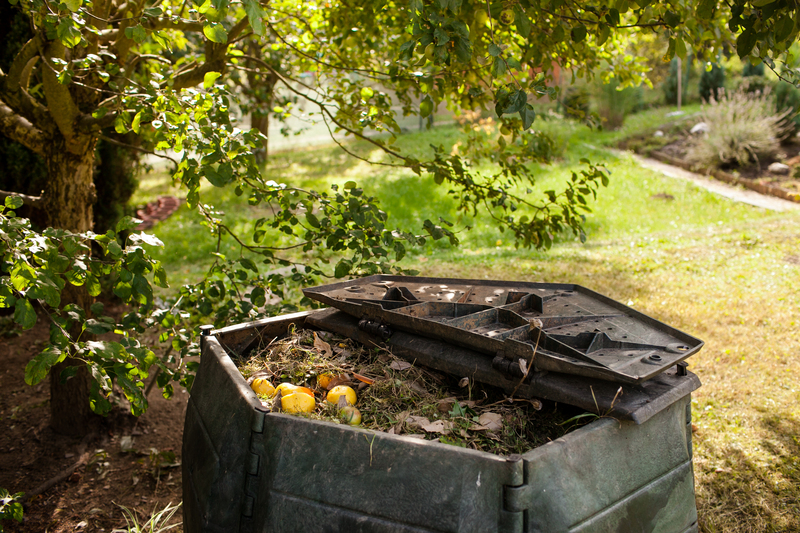Achieve Tranquility with Minimalist Living and Decluttering
Minimalism isn't just an interior design trend--it's a transformative lifestyle proven to foster peace, clarity, and fulfillment. Minimalist living and decluttering go hand-in-hand to help you achieve tranquility at home and in your mind. In a world overwhelmed by distractions, possessions, and obligations, embracing minimalism can be your gateway to a calmer, more intentional existence.

Understanding Minimalism: More Than Just Less Stuff
At its core, minimalism is about curating your environment and your life to include what matters most--and eliminating the rest. Contrary to stereotypes, minimalist living doesn't mean stark white rooms or empty shelves unless that's your preference.
- Intentionality: Every item and activity in your life serves a purpose or brings you joy.
- Clarity: Fewer distractions mean more focus on what truly matters.
- Freedom: Releasing excess possessions and commitments grants you mental and physical space.
Decluttering supports minimalism by removing unnecessary belongings that can create mental noise and hinder your sense of peace. The ultimate goal? Achieving a serene environment that nourishes well-being and allows for personal growth.
The Benefits of Minimalist Living and Decluttering
1. Reduced Stress and Anxiety
Cluttered environments often cause overstimulation. Studies suggest that organized spaces encourage relaxation and reduce the feeling of overwhelm. When you embrace minimalist living, your surroundings become visually and emotionally soothing.
2. Enhanced Focus and Productivity
A minimalist space limits distractions, enabling you to concentrate on tasks and cultivate creativity. Whether you work from home or simply want to enjoy your leisure time, a decluttered environment promotes mental clarity.
3. Improved Emotional Well-being
Excess possessions can be emotionally draining. Letting go of what no longer serves you is empowering, paving the way for personal growth, resilience, and genuine happiness.
4. Financial Freedom and Sustainability
Minimalist living encourages mindful buying habits, saving you money and reducing waste. Buying less means you invest in quality over quantity while supporting a sustainable lifestyle.
5. More Time for What Matters
Spending less time cleaning, organizing, and shopping allows you to refocus your energy on relationships, hobbies, and self-care.
Decluttering Your Space: Step-by-Step Guide
Embarking on your minimalist journey begins with decluttering. Here's how to approach it deliberately and avoid overwhelm:
1. Set Clear Intentions
Define your motivation: Why do you want to live with less? Maybe you crave a peaceful home, want to streamline your daily routine, or hope to reduce cleaning chores. Write down your reasons and refer back when you need encouragement.
2. Start Small
Minimalist living is a marathon, not a sprint. Begin with a single drawer or shelf. Completing small areas provides immediate wins and motivates you to tackle bigger spaces.
3. Sort, Select, and Simplify
- Empty the space: Remove everything from the area you're addressing.
- Assess each item: Ask yourself: Do I use this? Does it bring me joy? Would I buy it again?
- Decide: Place items into keep, donate/sell, or discard piles.
Repeat this process consistently throughout your home. Don't worry about achieving perfection immediately--minimalism is about continuous improvement.
4. Create Systems to Prevent Recluttering
- Adopt the "one in, one out" rule: For each new possession, let go of an existing one.
- Designate homes for everything: Items are less likely to pile up when they have designated places.
- Schedule regular mini-decluttering sessions to maintain your minimalist sanctuary.
Optimizing Your Home for Minimalism
A minimalist home supports tranquility by emphasizing simplicity, functionality, and open space. Here's how to design each area:
Living Room
- Choose multipurpose furniture--like storage ottomans or modular sofas.
- Display only a few curated decor items; let negative space create visual calm.
- Store remote controls, books, and accessories out of sight in baskets or drawers.
Bedroom
- Limit colors to soothing, neutral palettes to encourage rest.
- Remove unused clothing, shoes, and decor; keep surfaces clear.
- Use under-bed storage for off-season items if needed.
Kitchen
- Edit cookware and utensils to essentials; store infrequently used gadgets elsewhere.
- Keep countertops clear for meal prep and visual serenity.
- Organize your pantry with labeled baskets or jars; discard expired foods regularly.
Bathroom
- Only store daily-use products in easy reach; hide extras in bins or drawers.
- Limit towels and linens to what your household regularly uses.
- Keep surfaces free from clutter for easy cleaning and relaxation.
Minimalist Living Beyond Physical Possessions
Minimalism extends beyond "stuff." To achieve tranquility, consider decluttering your digital life, commitments, and even your mental space.
Decluttering Your Digital Life
- Unsubscribe from unnecessary emails to reduce digital noise.
- Organize files, photos, and apps--delete what you no longer need.
- Limit screen time, especially before bedtime, to nurture mental calmness.
Streamlining Your Schedule
- Say no to activities or events that don't align with your values or goals.
- Automate or batch tasks where possible for increased efficiency.
- Prioritize downtime and self-care as essential components of your lifestyle.
Mental and Emotional Minimalism
- Practice mindfulness to foster presence and gratitude.
- Limit exposure to information or relationships that drain your energy.
- Embrace simplicity in your thoughts--let go of perfectionism and self-judgment.
Common Challenges and How to Overcome Them
Emotional Attachment to Possessions
Letting go can be tough--many items evoke memories or represent aspirations. Tips:
- Photograph sentimental objects you no longer need to preserve memories without the physical clutter.
- Gift cherished items to friends or family who will appreciate them.
- Focus on the freedom and peace you'll gain by releasing the old.
Fear of Missing Out or Regret
It's common to worry you'll need something after discarding it. Challenge this fear by considering:
- How often have you truly needed old or duplicate items in the past?
- Most things you let go can be repurchased or borrowed if absolutely necessary.
Pressure from Society or Loved Ones
Not everyone embraces minimalism. Communicate your intentions kindly, and remember, your journey is for your peace of mind.
Tips for Maintaining Your Minimalist Lifestyle
- Be conscious when shopping: Ask yourself whether a potential purchase adds real value to your life.
- Embrace experiences over things: Invest in trips, classes, or time with loved ones rather than material goods.
- Revisit your goals regularly: Reflect on your progress and adjust your approach as needed.
- Celebrate milestones: Notice how much lighter, happier, and more peaceful you feel as you progress along your minimalist path.
Simple Routines to Foster Everyday Tranquility
Maintaining a minimalist, clutter-free home is easier with simple, daily habits. Here are routines you can implement:
- Daily tidy-up: Spend 5-10 minutes each evening clearing surfaces and putting items away, keeping clutter at bay.
- Weekly reset: Declutter your car, bag, workspace, and fridge once a week for ongoing freshness.
- Monthly review: Scan rooms and get rid of overlooked items you haven't used or needed.
- Seasonal swaps: Rotate clothing, decor, and hobbies based on the season--store or donate what you no longer need.
Transform Your Mindset: Minimalism as a Way of Life
Choosing minimalist living is more than a design preference. It's a path to tranquility, intentionality, and freedom. By consistently decluttering--physically, digitally, and mentally--you can create a home and a life that truly nurture your well-being.
Begin your journey with small, manageable steps; celebrate every bit of progress. Over time, you'll notice a profound shift in your sense of calm, clarity, and happiness. Remember, minimalism looks different for everyone--the most important thing is that it helps you achieve the peace and fulfillment you seek.

Frequently Asked Questions About Minimalist Living and Decluttering
1. Is minimalist living expensive?
Minimalism actually saves you money by reducing unnecessary purchases and encouraging thoughtful investments in quality items.
2. Do I need to get rid of all my belongings?
Absolutely not. Minimalist living is about keeping what adds value to your life and letting go of excess.
3. How can I motivate my family to declutter?
Lead by example, communicate the benefits, and involve them in decisions about shared spaces.
4. What are some recommended resources?
- Books: The Life-Changing Magic of Tidying Up by Marie Kondo, Goodbye, Things by Fumio Sasaki
- Documentaries: Minimalism: A Documentary About the Important Things
- Blogs: Becoming Minimalist, The Minimalists, Slow Living Blogs
Conclusion: Create Your Tranquil Haven with Minimalist Living
By choosing minimalism and decluttering as your guide, you gain more than a tidy space--you open yourself to greater tranquility, deeper happiness, and genuine freedom. Start small, stay consistent, and remind yourself of your *why* whenever you meet challenges. Your calm, intentional, and joyful life awaits--one simple step at a time.